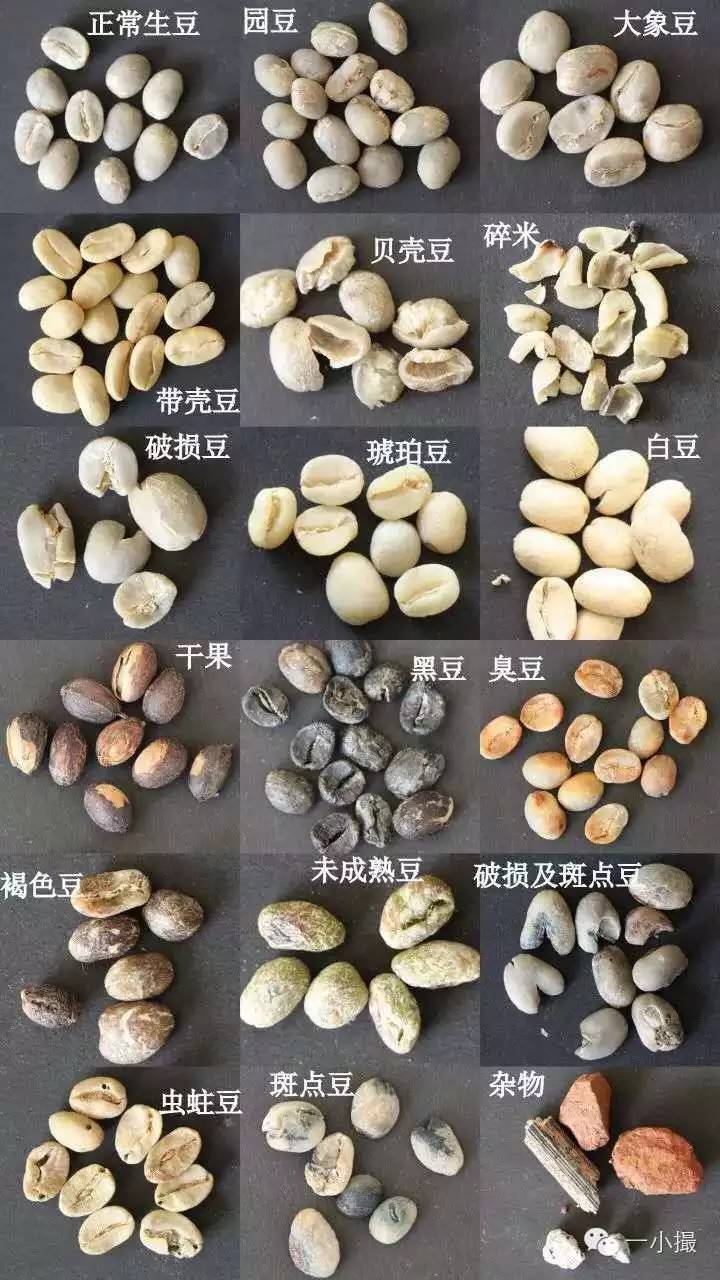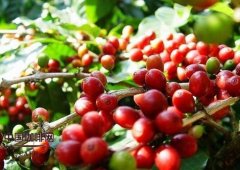What does a roaster do? how does he become a coffee roaster?
1. I will check the condition of the defective beans when I buy the cooked beans. If it's sun beans, check the proportion of beans that look very white (uncolored). If there are more than one of these beans, the coffee brewed from this packet of beans is bound to have an obvious peanut flavor. From this we can judge that the baker does not pick ripe beans. After that, whether in the sun or in water, check to see if there are obvious beans with strange colors (moldy beans, black beans, etc.), and check the proportion of beans with wormholes. According to the above points, we can clearly judge whether the baker has the habit of picking raw and cooked beans. This reflects an attitude, which determines the lower limit of doing a lot of things.
two。 On the whole, I will feel whether different kinds of coffee baked by a roaster have the same flaw in taste, such as grass taste (bean core is not fully baked), light roasted beans have bitter taste, plant taste (incomplete development, insufficient degradation); shallow roasted beans have scorched taste (high calorie supply efficiency at a certain stage); shallow, medium-roasted beans taste irritating (maybe external coke). The flavor of high-grade shallow baked beans is insipid (the curve is too smooth and the baking time is too long). Again, try a variety of different beans to see if they all have one of the problems, rather than a bean that has a problem. If so, it can be understood that the baking curve commonly used by the baker has some defects in the full development of coffee beans.
3. I will especially choose some characteristic beans: Brazil (low water content and soft), sun Yega (low water content but hard), washed Yega (high water content and hard), Mantenin (high water content but soft), and preferably beans of the same year. To test separately, if these four types of beans can have a good performance. Well, congratulations, you have found a very high quality bakery. He has his unique method, which can fully develop different kinds of beans by using different temperature and heating efficiency in the early, middle and later stages.
4. If it were me, I might also ask him to bake with a quantity that is not his usual quantity per pot (for example, a kilogram stove is accustomed to 1 kilogram per pot, I asked him to bake 600 grams). Don't ask me in this way. I confess that from the point of view of being responsible to the customer, I have not studied the best curve of different quantities yet. If there are different amounts of beans, they can all be given the appropriate baking mode. This requires a comprehensive and thorough understanding of the heating mode needed at each stage of the bean baking process, and the machine you use basically achieves the level of man-machine integration.

Important Notice :
前街咖啡 FrontStreet Coffee has moved to new addredd:
FrontStreet Coffee Address: 315,Donghua East Road,GuangZhou
Tel:020 38364473
- Prev

Brazilian coffee making technology Brazilian coffee beans
Let's talk about desizing. The desizing method was introduced to Brazil 25 years ago by Pinhalense, a well-known machinery and equipment manufacturer. Desizing is the second most popular way to treat raw coffee beans in Brazil, and Brazilians like to call it Cereja Descascado (Descascado means peeling, Cereja means fruit). In Central American countries, desizing is also known as honey treatment. In
- Next

Charcoal coffee? What's charcoal coffee?
When you hear charcoal coffee, the first thing you feel must be wow, this is bitter! Well, maybe it will. But do you know what charcoal roasting really means? As far as I know, many people understand it: charcoal coffee, the origin of the name, because coffee is roasted to a charcoal color. That's why it's called charcoal. But was that really the case? First of all, let's not add that.
Related
- Beginners will see the "Coffee pull flower" guide!
- What is the difference between ice blog purified milk and ordinary milk coffee?
- Why is the Philippines the largest producer of crops in Liberia?
- For coffee extraction, should the fine powder be retained?
- How does extracted espresso fill pressed powder? How much strength does it take to press the powder?
- How to make jasmine cold extract coffee? Is the jasmine + latte good?
- Will this little toy really make the coffee taste better? How does Lily Drip affect coffee extraction?
- Will the action of slapping the filter cup also affect coffee extraction?
- What's the difference between powder-to-water ratio and powder-to-liquid ratio?
- What is the Ethiopian local species? What does it have to do with Heirloom native species?

